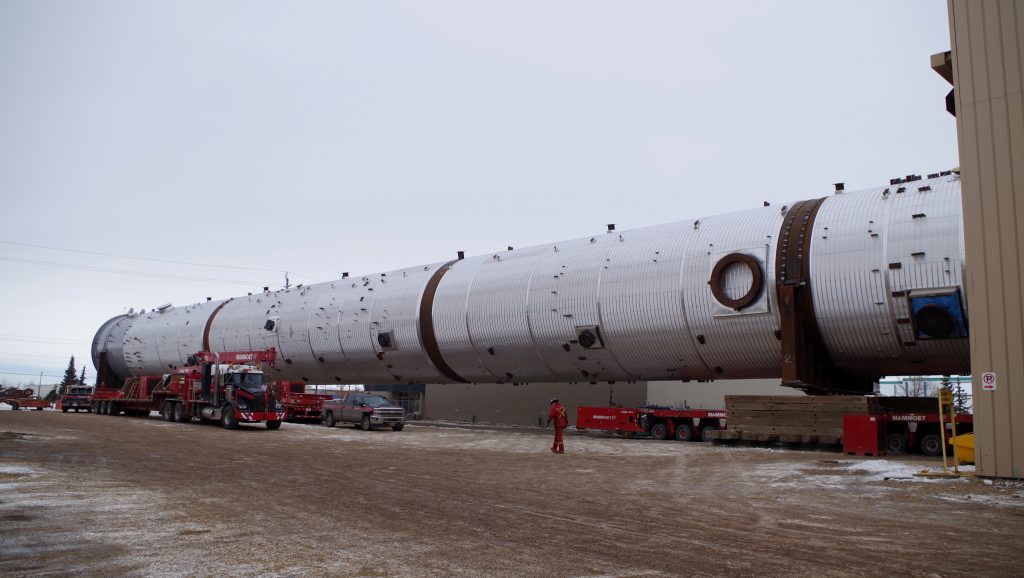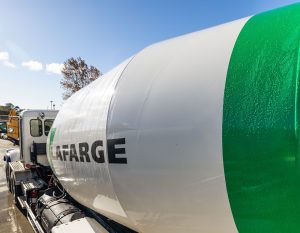Just as one of the biggest pieces of industrial equipment ever to travel Alberta’s highways reached its destination, the province decided to turn its attention to the future of the routes used to transport high loads.
Recently, a 96-metre-long pipe weighing 820 tonnes made its way from Edmonton to Fort Saskatchewan. The piece of petrochemical developmental equipment called a “splitter” will be installed at the Heartland Petrochemical Complex and is the heaviest load ever taken over Alberta’s highway system.
In 2018, the Alberta government completed a provincewide study titled High Load Corridor Network for Over-size and Over-weight Loads in Alberta, which, according to Alberta Transportation, aims to “take a long-term, holistic approach for updating and developing Alberta’s High Load Corridor network.”
The study is not yet public, but a map of potential routes has been released.
According to a Government of Alberta release, the study recommends $1.6 billion of investment in the corridor over the next two decades. The release also stated proposed enhancements could expand the corridor from 6,500 kilometres to approximately 10,000 kilometres.
“A strong transportation network and an effective High Load Corridor are critical to Alberta’s economic, social and environmental strength and diversity. I’m confident this strategy will help pave the way for long-term, sustainable economic growth and jobs in Alberta. Now, more than ever, this is critical for our province,” Alberta Transportation Minister Brian Mason said in a statement.
“It’s not a circumstance where ‘this is done next year,’ but rather it’s about investments over the next couple of decades,” explained Alberta Transportation executive director Scott Beeby.
“Alberta high load corridors are evolving, and part of the impetus for our study was looking at the value in the corridor and taking a strategic approach.”
Factors determining where to upgrade or build new routes include knowing where various loads are being built, where they need to go, and then building out the corridor in ways that facilitate that, Beeby said.
“We look at the proximity to module yards as well as proximity to major urban centres, if there are bridges that can accommodate our loads, or if there are railway crossings,” he said.
Beeby pointed to the 2018 Alberta budget, including a $90 million investment to upgrade the Vinca Bridge across the North Saskatchewan River near Edmonton so it can carry both heavy and oversized loads and save transports from detouring to a bridge further east.
But “different loads have different needs,” he added, with some routes required to handle heavy loads while others need to address wider or oversized loads like houses.
“In some circumstances, high loads could run into existing utility lines, so you can then bury or relocate lines to facilitate lines in future,” Beeby said.
One of the benefits of the study, he said, is studying how to connect the road network to other jurisdictions, particularly regarding high load movement.
“We look to connecting to British Columbia and Saskatchewan, but with wind farms we have a significant connection to the United States. We’re not an insular province in that sense, but a lot of permitting of loads is intra-Alberta,” Beeby said.
“It depends on the project. Some equipment is built overseas and brought in by rail, then taken by road. There are also some facilities in Saskatchewan that also build items,” transport engineering director Kim Durdle added.
Alberta Transportation makes the principal investments in the provincial road network including high load corridors, Beeby said, and the ministry works with municipalities to identify their needs and then consider those investments as part of the province’s capital planning process.
“We lead those construction projects ourselves, but there are other instances where industry points to projects where they feel they need to make their own investments to carry high loads. These are very collaborative relationships,” he said.
“This is really about taking a holistic view of the road network and making sure investments align with government and over the longer term with industry.”











Recent Comments
comments for this post are closed